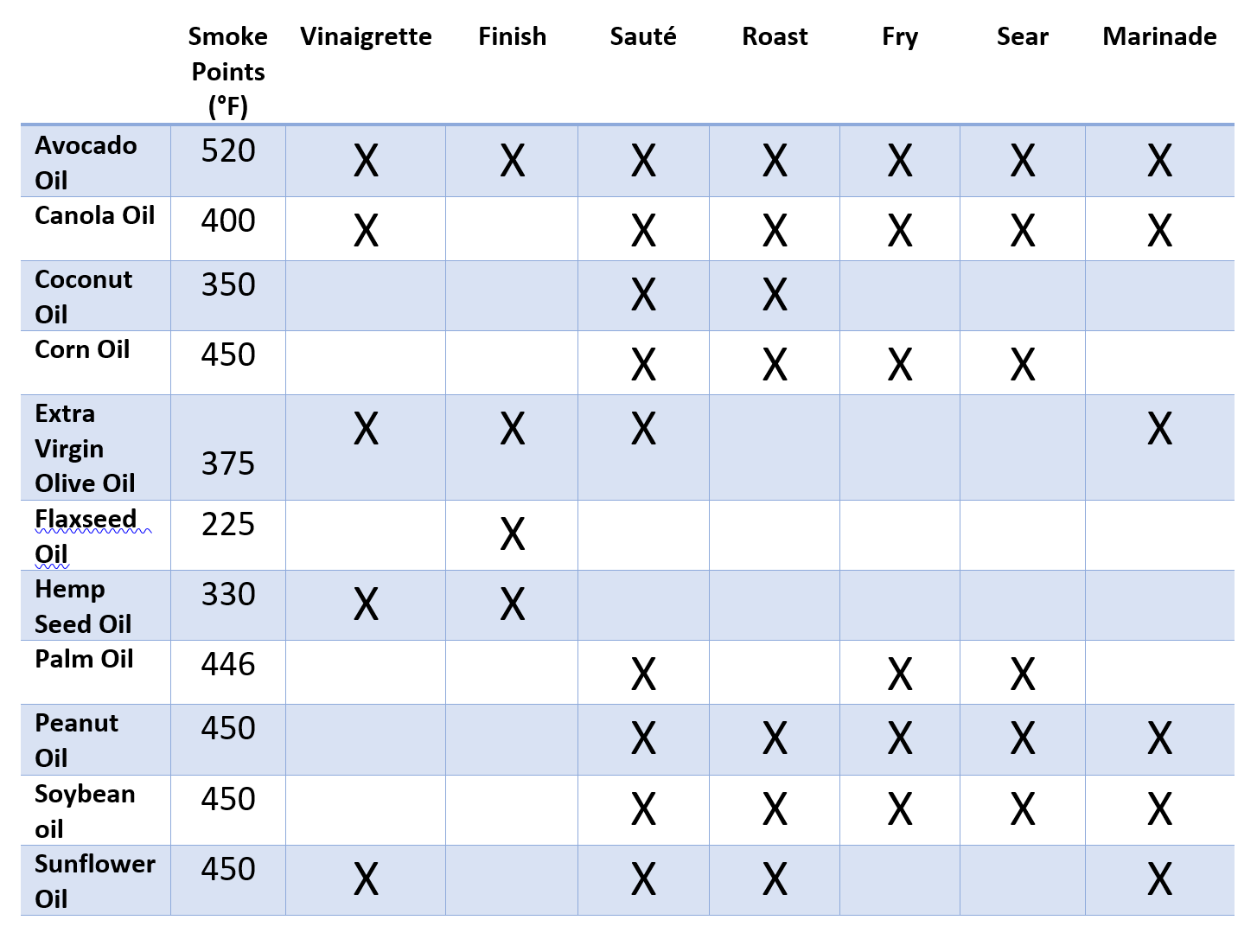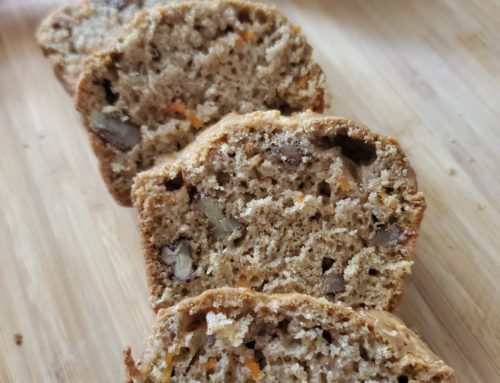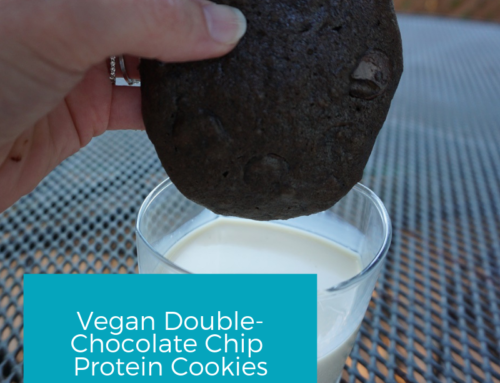
I was introduced to avocado oil a few weeks ago, which is great because it gives us another cooking oil that we can use in the kitchen. But then I found myself asking, should I use olive oil or avocado oil? And that’s just two different options. We know there are a lot of options when it comes to cooking oils, as well as a lot of confusion. Which one is the healthiest? Which one is polyunsaturated fats? Which one should you use to fry something? Which one should you use for flavor? It’s perplexing and can be overwhelming. So I did a little research and wanted to share it with you.
Let’s start with a few basic things to keep in mind with all oils:
Calories are the same. Every oil contains about 120 calories and 13 g of fat per tablespoon. Since they are all made up of lipids (fats), the calories you get are going to remain basically the same. There’s not an oil that is magically lower in calories but what makes cooking oils different is the chemical structure of hydrogens and carbons. Each oil has a unique ratio of hydrogens bonded to carbons and this is where we get the terms saturated fat, monounsaturated fat, and polyunsaturated fat.
The ratio determines if the oil is a solid or a liquid and generally saturated fats are going to be solid at room temperature, and monounsaturated and polyunsaturated oils are going to be liquid at room temperature. The ratio also determines how well the oil can withstand high temperatures. What we mean by withstanding high temperatures is referred to as smoke point. The smoke point is the temperature at which oils start to break down, lose nutrients, and develop smoky flavors. Smoke point makes a huge impact on what type of oil you should use and I’ve included each oil’s smoke point below.
Since each oil has a different hydrogen, carbon ratio, along with the number of double bonds between the carbons and hydrogens, the health benefits you get are going to vary. Since oils are liquid, you won’t typically find any fully saturated fat oils. But primarily, oils fall into the monounsaturated and polyunsaturated fat categories.
Monounsaturated fats and polyunsaturated fats can have a positive effect on your health, when eaten in moderation. Monounsaturated fatty acids can improve blood cholesterol levels, which can decrease your risk of heart disease. Research also shows that these fatty acids can help control insulin and blood glucose levels, which can be helpful in managing your risk of type 2 diabetes. Polyunsaturated fatty acids are mostly found in plant-based foods and oils and research suggests that eating these type of fats can improve blood cholesterol levels, as well as decrease your risk of type 2 diabetes.
Cooking Oils

Meet the Oils
Avocado Oil
High in monounsaturated fat (a healthy fat), avocado oil has a high smoke point so it makes for a great essential in the kitchen. Avocado oil also is high in potassium, vitamin A, E, and D so you’re getting other nutrients when you cook with this oil.
Canola Oil
Pressed from the rapeseed plant, canola oil is similar to vegetable oil in flavor, color, smoke point, and usage qualities. It’s a good all-purpose oil that provides a light flavor. It’s high in omega-3 fatty acids (an essential fatty acid).
Coconut Oil
Extracted from the meat of coconuts and because of its chemical structure it is a solid at room temperature. It has a low smoking point, so you should avoid cooking with it at high temperatures. Coconut oil is high in vitamin E, K, and iron.
Corn Oil
Processed from the corn, this refined oil is often used for frying since it has a high smoke point. It’s not the most nutrient based oil, but does provide some vitamin E. It’s high in omega-6 fatty acids, so this oil should be used in moderation.
Flaxseed Oil
This oil gives a nutty taste but too much of it can give a fishy flavor so use sparingly in dressings or as a finisher. It’s high in potassium and in omega-3 fatty acids.
Olive Oil
Robust in flavor, with a lower smoke point means it’s best for vinaigrettes, finishing, and low temperature cooking. It is rich in polyphenols, which are antioxidant compounds that have anti-inflammatory properties. Olive oil is high in vitamin E and monounsaturated fat.
Palm Oil
This is another semi-solid at room temperature oil and has recently become popular in commercial baking in place of other trans fats. Since it has a higher smoke point, it’s also used in frying. It is high in beta-carotene, which is used in the body as a precursor of vitamin A.
Peanut Oil
Peanut oil has a nutty scent and a powerful flavor and is a very popular frying oil. It’s often used in Asian cuisine. This oil is high in vitamin E and phytosterols, which is a family of molecules related to cholesterol and works to inhibit the intestinal absorption of cholesterol.
Sesame Oil
Sesame oil has relatively neutral flavor, as well as a high smoke point so it’s a great general-purpose oil. It’s high in vitamin E and K.
Soybean Oil
Soybean oil is used in margarines, salad dressings, and shortenings and is high in omega-6 fatty acids. It does provide some vitamin K but should be used in moderation.
Sunflower Oil
This oil is great for searing and sautéing and gives a light, nearly flavorless flavor to your foods. It’s another oil that is high in omega-6 fatty acids so should be used in moderation.
Overall, not all oils are created equal and every oil has a specific place in the kitchen and in our diets. What type of oils do you like to use? Do you experiment with different types of oils in your cooking?







Leave A Comment